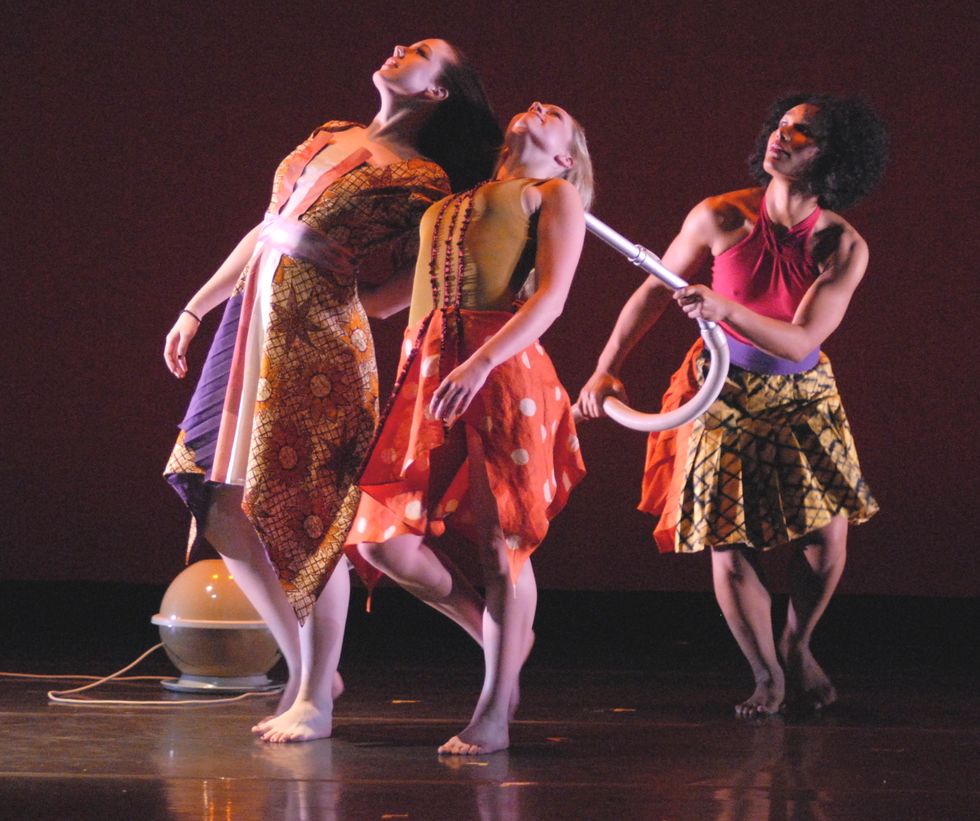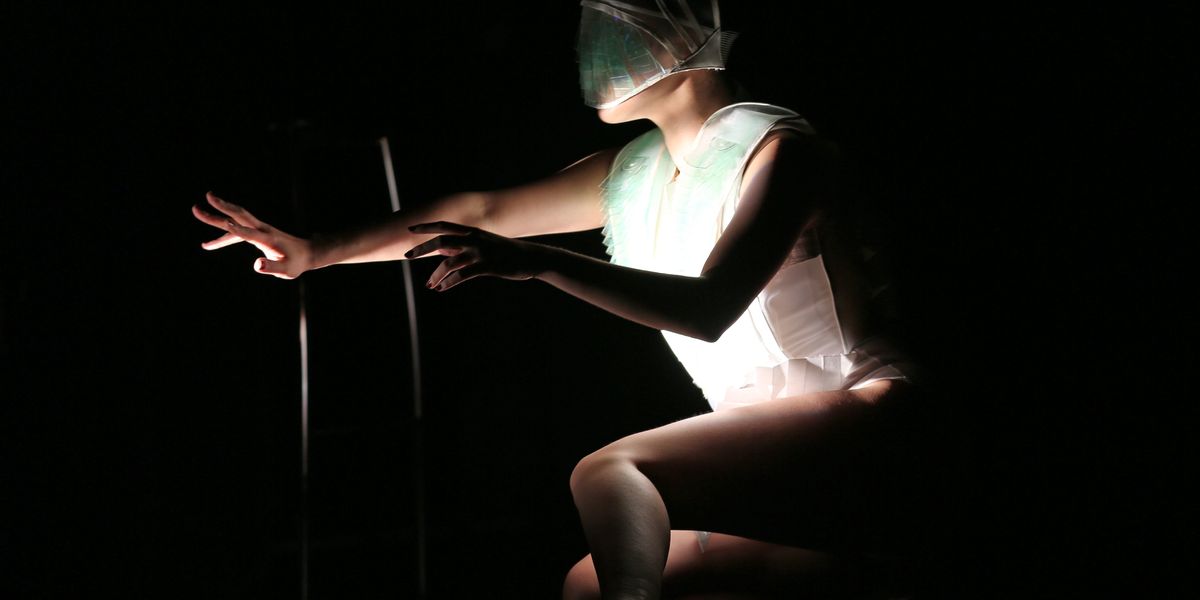Your Guide to Dancing Experimental Work for the First Time
If you were asked to create a dance with a vacuum cleaner, what would you do? That’s the task University of Michigan professor Amy Chavasse gave her college students during the creative process for her work, Swimming the English Channel. “One student did a raunchy, hilarious solo with the vacuum, and ended singing The Beatles’ ‘With a Little Help from My Friends,’ ” recalls Chavasse.
Though some dancers take to it immediately, for many, their first encounter with experimental work is awkward or even terrifying. An open mind can help dancers embrace the unfamiliar.

Chavasse’s Swimming the English Channel
Tom Smith, Courtesy Chavasse
When You’re Preparing
Students heading to college or a contemporary summer program who have yet to experience an experimental process should get used to improvisation beforehand, as many choreographers develop work this way. “Spend even just half an hour to feel something new, talk to yourself, make sounds, get to an unfiltered place,” Chavasse says. She also encourages students to have real life adventures outside of dance. Go social dancing, travel to new places or allow yourself to get lost. “Dancers need something that nudges them that is not in the dance world,” says Chavasse. “This helps them navigate unusual situations in the studio.”
If you know you will be working with a specific choreographer, view their work live or online to prepare. Look into the history of experimental dance to gain perspective on the boundary-pushing lineage. If the work calls for vocal exploration, choreographer Francesca Harper—also a trained singer and actress—says that taking voice and acting lessons can be profoundly beneficial. “Just try, so you can develop an awareness of what your voice means within your body,” she says.

Harper’s The Freedom Series
Bill Hebert, Courtesy Harper
When You’re in the Room
As ironic as it sounds, even experimental dance contains common tropes, including dancers vocalizing and using props, and extended moments of stillness or repetition. When investigating these new elements, choreographer Netta Yerushalmy says dancers should give themselves permission. “Permission to be ugly, permission to not know, permission to be wrong,” she says. “Experimental choreographers want to have conversations, so be okay with feeling silly and asking questions!”
Yerushalmy suggests approaching stillness as an active task, becoming aware of breath, thoughts, light and other people. Finding stillness is also integral to the improvisational process. “I pause when I’m not feeling connected, and I give myself time to process,” says Harper.

Chavasse’s Swimming the English Channel
Tom Smith, Courtesy Chavasse
When using unusual props—like a vacuum cleaner—Chavasse recommends keeping an open mind. “Try not to know what these things are for or what the outcome should be,” she says. “Let your willingness to stumble around be part of the process.”
Harper recalls a turning point in her career as a dancer with Ballett Frankfurt. “William Forsythe once asked me to wear a microphone and improvise to the sound of my own breath onstage,” she says. After embracing the chance to experiment with an unfamiliar task, Harper was quickly promoted to principal dancer. “Accept the unknown as the starting point,” she says.





